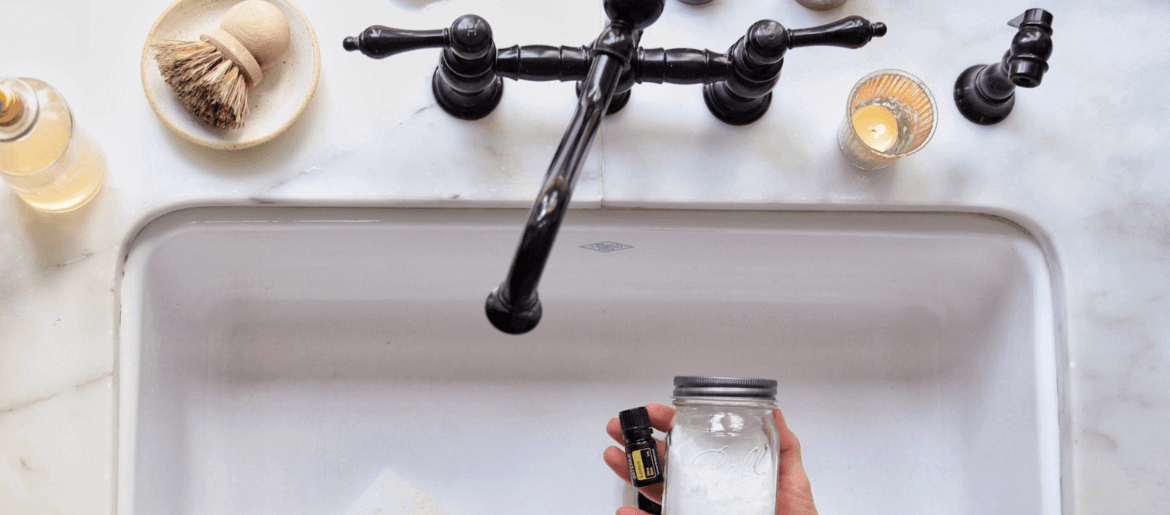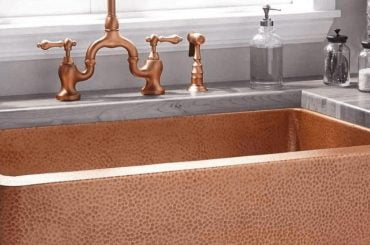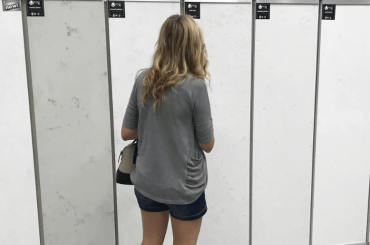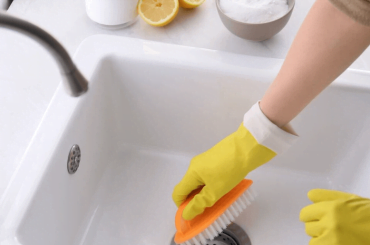When it comes to keeping your kitchen clean, there are a lot of myths and misconceptions about what can and cannot be done. Bleach is often one of the go-to ingredients. But is bleach safe to pour down the kitchen sink?
In this post, we’ll break down the truth about bleach and sinks so you can keep your kitchen looking sparkling clean.
We will also discuss how bleach can be used in the kitchen and share some tips on how to pour bleach down the kitchen sink safely. Stay safe and healthy in the kitchen by using bleach!
Can You Use Bleach In Kitchen?
Yes, you can use bleach in the kitchen. It is most commonly used to clean countertops, sinks and other surfaces that come into contact with food. Bleach should never be used on wooden cutting boards as it will damage the wood.
Bleach can also be used to clean and disinfect dishcloths and sponges. It is important to remember that bleach is a strong disinfectant and should be diluted with water before use. When using bleach, it is important to wear gloves, eye protection and other protective clothing to prevent skin irritation or injury from contact with the solution.
Additionally, it is important to keep bleach away from children and pets.
Finally, bleach should never be mixed with ammonia or vinegar, as this can create dangerous fumes. Bleach can be a useful tool for cleaning and disinfecting surfaces in the kitchen, but it is important to use caution and follow safety guidelines when using it.
How to use bleach safely?
Using bleach safely is an important part of keeping your home clean and healthy.
Here are some tips to help ensure you use it properly:
- Wear rubber gloves and eye protection when using bleach: Bleach can cause skin irritation and can damage the eyes, so make sure you wear the appropriate protective gear.
- Dilute bleach in water before use: Bleach should be mixed with water at a ratio of 1:10 or one cup of bleach for every 10 cups of water. This will ensure that you don’t cause any damage to surfaces or materials.
- Select the right type of bleach for your job: Chlorine bleach is used primarily for disinfecting and whitening, while oxygen bleach is best used for removing stains.
- Never mix bleach with other cleaning products: Bleach can react with some chemicals to form hazardous gases, so make sure you use it.
- Ventilate the area you’re using the bleach in and don’t leave it on surfaces for too long. Bleach can cause respiratory irritation and its fumes can be dangerous, so make sure you open windows or use fans to keep the area well-ventilated.
- Dispose of any leftover bleach properly: Never pour unused bleach down drains, toilets or onto the soil as it can hurt the environment. Instead, store it in a sealed container and take it to your local hazardous waste facility for disposal.
By following these tips, you can make sure that you use bleach safely and effectively around your home.
Can you pour bleach down the kitchen sink?
No, you should never pour bleach down the kitchen sink. Bleach is a very strong chemical that can react with other substances in the pipes, leading to corrosion of your plumbing system and potential damage to your home.
If you have stainless steel or porcelain sinks, you should avoid using bleach directly on them.
Additionally, bleach can be hazardous when mixed with other common household chemicals and create dangerous fumes. If you need to clean out your drain, there are safer and more effective products available that are specifically designed to do so.
Instead of using bleach, try using a combination of baking soda and vinegar to naturally clean your drains.
Ultimately, it is best to use bleach cautiously and dilute it before pouring it down the drain.
How to clean a kitchen sink with bleach?
- Fill a spray bottle with one part water and one part bleach, then mix it by shaking it vigorously.
- Spray the kitchen sink with the bleach solution until it is thoroughly wetted down.
- Let the bleach solution sit on the sink for at least five minutes to allow it to work on any dirt and grime.
- Scrub your kitchen sink with a scrub brush or sponge, focusing specifically on any hard-to-reach areas where food may be stuck in crevices or around the drain.
- Rinse the sink with warm water to remove all of the bleach solution and any remaining dirt particles.
- Dry your kitchen sink thoroughly with a clean cloth or paper towel. If any streaks remain, use a glass cleaner on them to make them shine again.
- Finally, empty and rinse the spray bottle with warm water and store it in a safe place.
Following these steps will help ensure your kitchen sink is sparkling clean and germ-free!
Pros and cons of using bleach to clean a kitchen sink
Pros:
- Bleach is a powerful disinfectant that can effectively kill bacteria, germs and other microorganisms in the kitchen sink.
- It’s easy to find in stores and relatively inexpensive.
- It’s a fast way to clean and disinfect a kitchen sink without the need for scrubbing or using harsh chemicals.
- It can be used on a variety of surfaces, including porcelain, stainless steel and plastic.
Cons:
- Bleach has a strong smell, which can linger in the kitchen if not properly ventilated.
- It can be corrosive to certain materials like rubber and aluminum, so it should only be used on surfaces that are safe from bleach contact.
- If mixed with other cleaners or acids, it can release toxic chlorine gas, which can be dangerous if inhaled.
- If not used properly, it can leave behind streaks or residue on the surface of the sink.
- If left on surfaces for too long, it can also discolor or damage them.
Also Read: Are Black Faucets Hard To Keep Clean?
Alternative methods for cleaning a kitchen sink
- Baking Soda and Vinegar: Create a paste by mixing baking soda and vinegar. Spread the paste around the sink and let it sit for 10-15 minutes. Then, use a scrub brush to remove any debris or dirt from the sink before rinsing with warm water.
- Lemon Juice: Cut a lemon in half and rub it all around the sink. Let it sit for 10 minutes before scrubbing it with a brush and rinsing it with water.
- Boiling Water: Bring a pot of boiling water to the sink and pour it into the basin. Let it sit for 10 minutes before scrubbing it with a brush and then washing it.
- Dish Detergent: Mix dish detergent and hot water in equal parts. Apply the mixture to the sink and let it sit for 10 minutes before scrubbing with a brush and rinsing with warm water.
- Borax: Mix borax and hot water in equal parts. Apply the mixture to the sink and let it sit for 10 minutes before scrubbing with a brush and rinsing with warm water.
- Baking Soda and Salt: Mix baking soda and salt in equal parts. Apply the mixture to the sink and let it sit for 10 minutes before scrubbing with a brush and rinsing with warm water.
- Vinegar and Salt: Mix vinegar and salt in equal parts. Apply the mixture to the sink and let it sit for 10 minutes before scrubbing with a brush and rinsing with warm water.
- Hydrogen Peroxide: Mix hydrogen peroxide and hot water together in equal parts. Apply the mixture to the sink and let it sit for 10 minutes before scrubbing with a brush and rinsing with warm water.
- White Vinegar: Pour white vinegar directly onto the sink and let it sit for 10 minutes before scrubbing with a brush and rinsing with warm water.
FAQs – Can You Use Bleach In Kitchen?
How long can bleach sit in the sink?
Bleach should not sit in the sink for long periods because it can corrode metal and damage surfaces. If bleach is used to clean a sink, all areas where it has been applied should be rinsed thoroughly with warm water afterward.
It’s best to only have bleach in the sink for short amounts of time, no longer than 5 minutes. After this time, the bleach should be thoroughly rinsed away with warm water.
How do you clean drains with bleach?
To clean a clogged or smelly drain with bleach, you first need to prepare the area by putting on gloves and safety glasses. Make sure that the area is well-ventilated before proceeding. Next, you should pour 1 cup of bleach into the drain opening and let it sit for 10 minutes.
This will allow the bleach to break down grease and other residues that are clogging the drain. After 10 minutes, flush the drain with hot water. You may need to do this several times to ensure all of the bleach is flushed out.
If the smell persists after flushing, you can pour 1/2 cup of baking soda into the drain followed by a cup of white vinegar. This will create a fizzing reaction that can help to break up any remaining residue in the pipes.
Can bleach dissolve pipes?
The short answer is no. Bleach (sodium hypochlorite) is a strong oxidizer and can break down organic material into smaller pieces, but it will not dissolve pipes made of metal or plastic.
Using bleach on your pipes could cause damage due to its corrosive properties. If you have a clogged pipe, it is best to use a physical unclogging method like a plunger or snake or to call a professional plumber.
However, if you must use bleach on your pipes, be sure to flush the area with plenty of water afterward and keep an eye out for any signs of corrosion or damage.
What happens if you mix bleach and drain cleaner?
Mixing bleach and drain cleaner can be very dangerous and should never be done. The combination of the two results in a toxic gas called Chlorine gas, which can cause severe respiratory irritation, burning eyes, coughing, difficulty breathing, nausea, vomiting and even death if inhaled in large enough quantities.
In addition to these health risks, the gas can also corrode metal and other surfaces. Therefore, it is important to always keep these two products separate and never mix them. If you have accidentally mixed the two, make sure to leave the area immediately and get to fresh air as quickly as possible.
Final Words
So, the answer to the question is yes, you can use bleach in the kitchen. Just be sure to follow all of the safety precautions and always test a small area before cleaning an entire surface.
Always read the label before using any type of bleach product and follow all safety instructions. With these simple tips in mind, you can keep your kitchen clean and healthy using one of the most powerful disinfectants around!





